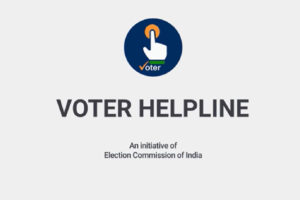The words “My sisters and brothers of America” had reverberated in the space between the walls of the World’s congress auxiliary building on September 11, in the year 1893. World heard the stentorian and calm voice of Vivekananda, who represented Hinduism in the Parliament of the world’s religions on the occasion of the World Columbian exposition, held in Chicago in 1893 to celebrate the 400th anniversary of the arrival (1492) of Columbus in the New World.
The Origin
Vivekananda, birthname Narendranath Dutt, was born on January 12, 1863 in Calcutta in an upper-middle-class family of a barrister Vishwanath Dutt. His father, Vishwanath was a novelist & philanthropist as well. Vishwanath was a person with a liberal outlook and free of any superstitions, and was well-versed in Sanskrit, Urdu, Hindi, Persian, Arabic, a rare attribute in the population those days. He was experiencing the socio-cultural renaissance in Bengal being led by the Brahmo Samaj and its various factions. He was married to Bhuvaneshwari Devi in 1851 and Narendranath Dutt was born in 1863. Vishwanath’s father (Vivekananda’s grandfather) Durgaprasad Dutt was an affluent man who was disenchanted with the material world and had left home to become a Sanyasin. Young Narendra had heard the stories of Durgaprasad in his childhood days which had influenced him. In his ripe age, Vishwanath used to run a law firm and most of his wealth and money was spent over family disputes. He had captured the family dispute in his Bengali autobiographical novel named Sulochana. Narendranath had an inquisitive bend of mind from his childhood years which would go on to shape his future journeys and self-discovery.
Life:
Having the mind of a polymath, he had a wide reading spectrum. He was a graduate from Scottish church college, Calcutta. Prior to that, he was the only student to have secured first division marks in the Presidency college entrance examination. He had a tremendous reading speed, and was identified as an accomplished photo-reader and a speed-reading expert which was evidenced when he quoted verbatim three pages from Pickwick Papers. In another case, in a discussion with a Swedish national, he had quoted something from the history of Sweden, which the other person found out to be true, after having disagreed with Narendranath. At another famous incident in Kiel, Germany, he was absorbed in reading some poetical work when Dr. Paul Duessen was speaking with him. Narendranath later spoke to Dr. Duessen. When he described in details the verses of the poem to Dr. Duessen, the later was left surprised and dumbfounded. The principal of his college, William Hastie had described young Narendranath as a genius and a lad of immense talents and possibilities, who was bound to make his mark in his life. He used to interact in the circle of Brahmo Samaj and with its leaders like Keshub Chandra Sen, who had established the Taberanacle of the New Dispensation as an edifice of Indian renaissance. These interactions and developments had heavily moulded the mind of Narendranath. Under Keshub Chandra Sen, he was actively involved in social activities like guiding the younger generations away from bad habits like liquor consumption through organizations under the Brahmo Samaj.
Connection with RamaKrishna & travels
In his college days, while Professor William Hastie was describing a poem of William Wordsworth- The Excursion, the class came across the word trance. Hastie suggested the students’ group including Narendranath to visit RamaKrishna of Dakshineshwar to grasp the true meaning of the word. This was the first meeting of the iconic Guru-Shishya duo. During their second meeting (at the house of one of the disciples of RamaKrishna) RamaKrishna asked Narendranath to sing, and from here onwards Narendranath, gradually became the former’s disciple. The exposition to RamaKrishna did not extinguish Narendranath’s inquisitive spirit.
Young Vivekananda was a sports enthusiast and had an unorthodox appetite for various Bengali dishes including non-vegetarian items. He was also a good cook. There is an interesting story from his younger days as a disciple under RamaKrishna. Once, he and some of his fellow disciples were visiting various places in Calcutta, trying out foods from various diners. When the group went back to RamaKrishna, one of the other disciples complained to the Guru that Naren had consumed meat curry. To this complaint, RamaKrishna retorted that even if the other disciples, especially the one who had complained, continue having pious meal of boiled rice, milk, and yoghurt throughout the life, they will never be able to match up to the intellectual, and spiritual level of Narendranath.
In his college days, Narendranath was attracted by Vedanta philosophy and in particular, the idea of monism or non-duality which espoused that the living soul and the greater divinity are the same. Under the tutelage of RamaKrishna, he had grasped the idea of the possible multiplicity of paths to a greater truth, which is condensed in the Bengali line- joto mat tata path. This means that the world is bound to have multiple perspectives with the presence of countless people under different religious denominations. Narendranath also understood a parallel and epistemologically similar idea- ekam sat, vipra bahuda vadanti, which means that there is one truth, and different scholars interpret it differently. This idea is somewhat similar to the notion of the Theory of Forms given by Plato, which states that the various perceived features and items in the world are imperfect reflections of a greater truth. The concept of eternal truth is represented in Vedanta as Satchitananda, which was internalized by Narendranath. This term is a combination of three words sat, chit, and ananda, and it means that the eternal truth(sat) gives bliss(ananda) to the consciousness(chit). Influenced by the teachings and ideas of RamaKrishna, Narendranath took to travelling across the length and breadth of India.
During his travels, he saw the sufferings of various sections of people. He had many unique experiences which further clearly placed infront of him, the failures of the Indian society in internalizing the teachings of the Vedanta. In one of the experiences of Narendranath, he was offered Chapati by a menial worker, which he ate. In another such incident, he was offered a smoke of tobacco by a cobbler, who probably was not thinking of any social retribution for such an act. At first, Narendranath refused the
Gradually, wherever he travelled, his (Narendranath’s) influence on people around him increased. In December 1892, he meditated for 9 days over a rock in the middle of crashing sea-waves near Kanyakumari, which is considered as an important turning point in his life. This site, after independence, was established as the Vivekananda Rock memorial, which became possible as there were similarities in the iconoclastic nature of Periyar EV Ramaswamy (prominent leader of the Self-Respect movement in South India) and Vivekananda. Even DMK founder CN Annadurai was known to appreciate Vivekananda a lot, which was crucial in the efforts of consensus-building while establishing the memorial. Later on from mid-1892 to mid-1893, the Rajas of Mysore, Khetri, & Ramnad arranged for his trip to US for the parliament of world religions to be held at Chicago in September 1893. At this juncture, Ajit Singh of Khetri had suggested him the name of Vivekananda.
On his way to the USA, during the part of the trip from Japan to Canada, he had a chance encounter with Jamshedji Tata, who after earning some fortunes in Opium trade in China was heading to Chicago for business ideas. Vivekananda had suggested Tata to set up industries, educational and research institutions in India, which had led to the founding of Tata Steel using money collected from people through a fund created by Bal Gangadhar Tilak, who shared a mutual respect with Vivekananda. (Tilak and Vivekananda had met each other in a train in 1892.) Tilak, V.O.C. Pillai, Rabindranath Tagore, PC Ray(founder of Bengal Chemicals) were some of the prominent faces of the Swaraj & boycott movement in the first decade of the twentieth century India. Tilak had setup a Swaraj fund through which Indians had subscribed the entire capital for Tata Iron & Steel set up by Jamsheji Tata’s son Dorabji in three months when the Englishmen had not provided the funds. It is worth noting that Tata’s effort inspired by Vivekananda, was crucial in the begining of local production of Iron in India. That Tata was inspired by Vivekananda is recorded in a letter kept at the Belurmath (founded by Vivekananda).
In Chicago, in the parliament of world religions organized on September 11, 1893 the speech of Vivekananda had mesmerized the audience, which was specifically recognized by John Harry Barrows, the President of the function. (An interesting aspect of the Parliament of the world’s religions of 1893 was that one of the luminaries present in the congregation was the inventor, Nikola Tesla, who had designed the Alternating current and had worked on the possibility of wireless communications.) Barrows had noted that Vivekananda’s speeches had the most wonderful influence over his auditors and that he was received with far greater enthusiasm than any other speaker on that platform, whether they were Christian, Buddhist, or Pagan. He further observed that the orthodox Christians present at the function described Vivekananda as a prince among men. J H Barrows, after whom the Divinity school in the University of Chicago is named, had also observed that Vivekananda’s belief, as reflected in his enamouring speeches in 1893, was that religions are nothing but the evolving of God through material man.
After Vivekananda returned to India, he was hailed as the lighthouse of the Vedantin idea. He set up his first ashram at Almora. Gradually, he expanded the network of his ashrams across India and established RamaKrishna mission at Belur, West Bengal, with the central goal of service to the society. An important aspect of his observation about the social necessity to follow Vedanta, was that the advanced countries in North-West Europe and North America were suitable to follow and practice the Vedanta, as they had fulfilled the basic necessities of sustenance of life and equality among the citizens. Vivekananda also observed that India and Indians, in general, lacked the spirit of work and industrial character also known as Raja guna, specifically defined under the Samkhya philosophy, one of the six core philosophies of Hinduism. He was not mincing his words as this lack of industrial and entrepreneurial nature among Indians was worsened during the Colonial rule over India, which had lietrally destroyed all the industries in India for the benefit of the East India Company and had turned Indians on a large scale into a category of clerks under British. (If one observes closely, this culture has spilled into the present years as well.) Vivekananda had also inspired numerous social workers from India and abroad to uplift the Indian masses out of penury; most prominent among them was Margaret E Noble, who later came to be known as Sister Nivedita.
Swamy Vivekananda was a monk who had redefined the idea of nationalism, which he defined using the principles of spirituality & the essence and the desire to serve. His birthday is celebrated in India as the National Youth Day. Like his Guru, he had time and again, stressed upon the unity of mankind. He had stressed on the need of nerves of steel to take India and its poor out of destitution. He had stated that as long as there is a single hungry soul on the streets in the country, the education that the youth is being fed in the four walls of the classrooms is useless. Vivekananda had underscored that because of the combined willpower, the few Englishmen were able to rule and master over the countless Indians in the era of colonialism. In his (Vivekananda’s) younger days, Debendranath Tagore (father of Guru Rabindranath Tagore) had told him that he (Vivekananda) had the eyes of a Yogi, which was proved to be true in the later years. Vivekananda gradually became a unique monk, identified as the youth icon of a resurgent India, becoming a polestar for the younger generations, professing the attitude of selfless service to mankind and universal brotherhood.





